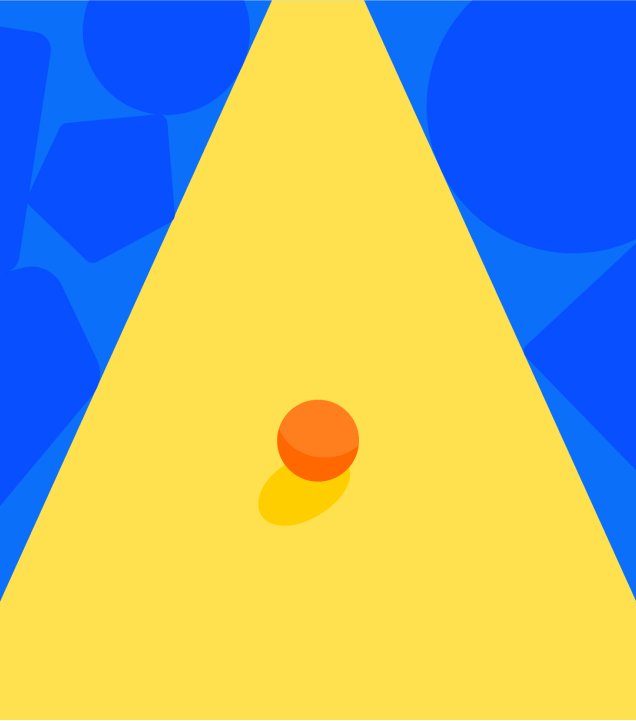Meditation & ADHD: An unexpected (but worthwhile) match
Lynn Shattuck
Jun 14, 2021
When we think about ADHD, we might envision a hyperactive, school-aged child bouncing around like a pogo stick.
While that can be a fitting enough illustration, ADHD can show up in a variety of ways, and at different stages of life. It’s caused by differences in the brain impacting executive functioning skills such as concentration, impulsiveness, attention, memory, and more. For me, it wasn’t until midlife that my symptoms became impossible to ignore. Though I’d been a disorganized daydreamer as a child, like many girls with ADHD, I slipped under the radar, squeaking by in school. But as the decades piled up, my life became busier, and my responsibilities more diversified. With two kids, a husband, a home, and a career, I have a lot to juggle. And I fumbled much of it. Our house was always a disaster, with trails of toys, crumbs, and mail strewn everywhere. Seemingly simple tasks like packing the kids’ lunches for school, or getting ready for a trip to the beach felt impossible. I lost my patience often over simple things like both of my kids talking to me at the same time. The memoir I’d wanted to write for years smoldered on the proverbial back burner, somewhere underneath the laundry and vacuuming.
It wasn’t just that I couldn’t focus. Overwhelm was the central, pulsing theme of my life. Once I discovered that the swirl of challenging traits I was struggling with were connected, convening beneath the umbrella of ADHD brain wiring, I set about understanding my new label. Besides medication, the treatment method I continued to discover was mindfulness. “ADHD is really a holistic disorder because it can affect the whole person and so many aspects of their life,” says Dr. Lidia Zylowska, psychiatrist and author of “The Mindfulness Prescription for Adult ADHD: An 8-Step Program for Strengthening Attention, Managing Emotions, and Achieving Your Goals.” Zylowska adds, “mindfulness can help in this holistic way as well, so it’s a good fit.” As a student of psychiatry, Zylowska was interested in helping adults with ADHD hone a greater awareness of their symptoms. When she encountered Jon Kabat-Zinn’s model for Mindfulness Based Stress Reduction, something clicked for her. “Mindfulness seemed like a great fit for treating ADHD,” she says. Of course, the idea of sitting for long periods of time watching the mind may be intimidating for those who experience ADHD. “The key is to make the challenge not too big. I set out to adapt existing mindfulness programs to be user-friendly for those with ADHD,” says Zylowska. Despite the challenges, she’s found that incorporating mindfulness can help address some of the problem areas that plague people with ADHD.
“Mindfulness can help with awareness of attention and emotional regulation. It can also help with choosing your actions, modulating your stress levels, and can really improve with how you’re showing up in relationships and communicating with others,” says Zylowska, noting that these are all areas that can be negatively impacted by ADHD. “Mindfulness can help a person where their area of struggle is.” Zylowska recommends several different ways to get started for those of us who find sustained periods of sitting meditation to be too overwhelming.

Take a class.
Zylowska suggests harnessing the power of positive peer pressure by signing up for a meditation class. “The regular practice of sitting down for a period of time can be hard for those with ADHD because routines are hard. It can be helpful to have the group support and structure of a class so that you’re not doing it on your own.”
Make it your own.
Zylowska encourages her patients to incorporate mindfulness into activities they enjoy doing. “If someone loves cooking, I might suggest they practice being present while chopping the vegetables and be attentive to doing one thing at a time. Likewise, someone who loves hiking, gardening or artistic pursuits can use those activities as mindfulness practice,” she says.
Mini check-ins.
One of the best things about mindfulness is that as a tool, it’s always available. “Throughout the day, incorporate brief practices where you check in with your body, your breath, and sound—the three anchors to the present moment that are always available,” Zylowska says. “Ask yourself, ‘Can I notice my breath? Can I tune into sound?’ and just listen. These brief check-ins exercise and strengthen your intentional muscles.”
Start small.
While some people practice sitting meditation for 30, 60, or more minutes at a time, that may be intimidating or unrealistic for someone with ADHD. Zylowska suggests setting a timer for a short period, like five or ten minutes, to make it an attainable goal.
Practice self-compassion.
Years of dealing with the challenges of ADHD can leave people with crippled self-esteem. “Through self-compassion, one can learn to be more accepting of own strengths and weaknesses,” Zylowska says. “An attitude of acceptance can, in turn, help manage and improve areas of weaknesses. For example, if you have more compassion for your own difficulty with time management, then you don't have to pretend it's not a problem, you don't have to feel shame every time you are late and you can get proactive about having tools to help you manage time.” While starting a mindfulness practice may be challenging for people with ADHD, Zylowska notes that mindfulness is like a muscle, and the more we use it, the easier it gets. “As you practice mindfulness, there will be more spontaneous moments of awareness,” she says. “Mindfulness brings us back to ourselves, our present immediate feeling or intention. The more we shift away from [autopilot] to an intentional state, the more we enforce that.”


Get our best price of the year for a limited time
- Access the full library of 500+ meditations on everything from stress, to resilience, to compassion
- Put your mind to bed with sleep sounds, music, and wind-down exercises
- Make mindfulness a part of your daily routine with tension-releasing workouts, relaxing yoga, Focus music playlists, and more
50% off your first year, then subscription will renew at full price.

Meditation and mindfulness for any mind, any mood, any goal

Stay in the loop
Be the first to get updates on our latest content, special offers, and new features.
By signing up, you’re agreeing to receive marketing emails from Headspace. You can unsubscribe at any time. For more details, check out our Privacy Policy.
- © 2025 Headspace Inc.
- Terms & conditions
- Privacy policy
- Consumer Health Data
- Your privacy choices
- CA Privacy Notice








